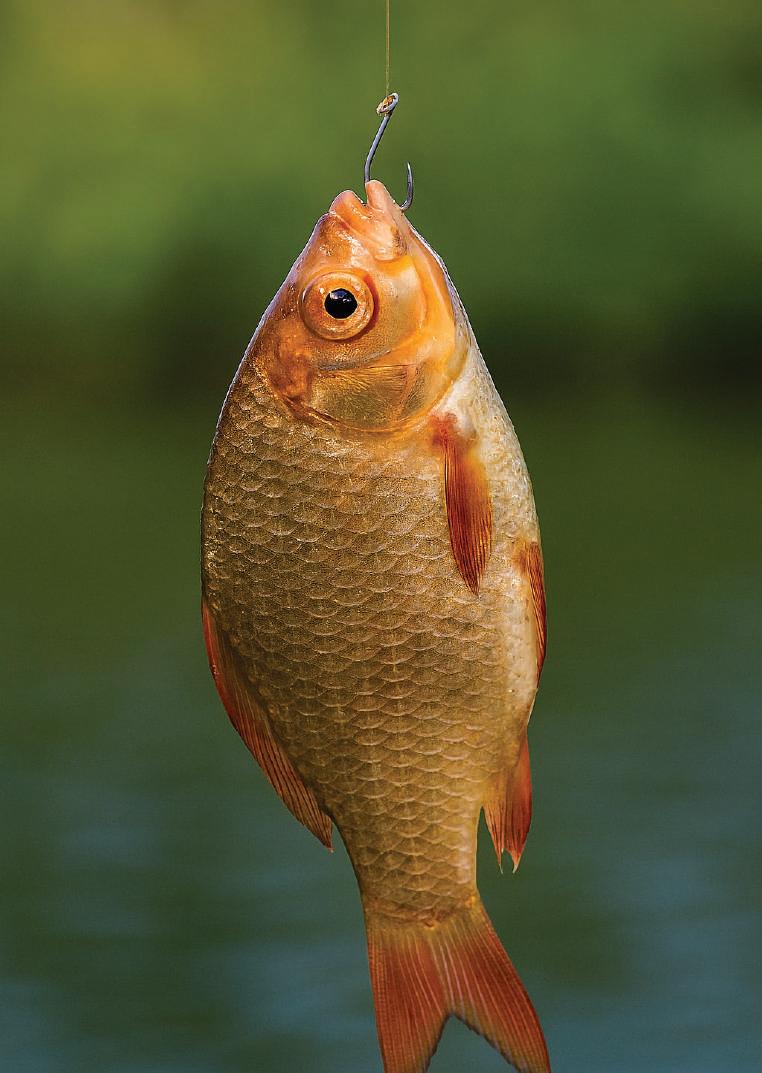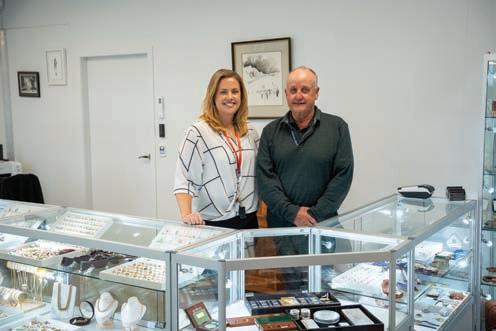

By Frank Neill
(left)




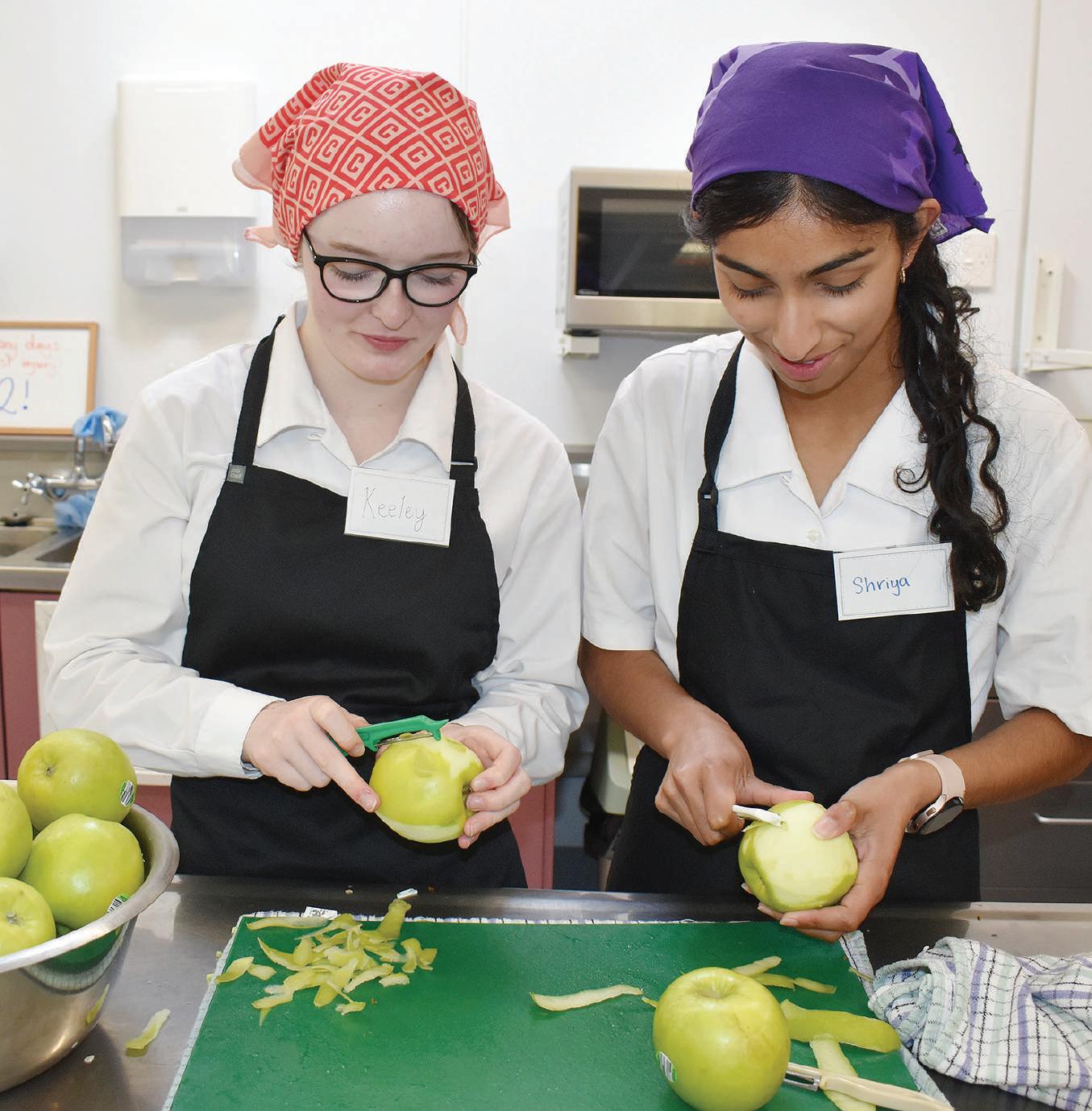


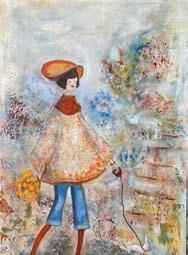


How to reach us

Phone (04) 587 1660
www.independentherald.co.nz







By Frank Neill
(left)











Phone (04) 587 1660
www.independentherald.co.nz




Continued from page 1.
Rourou Kai Ora translates into English as “food basket of well-being”.
“We are very pleased with how it has all started out,” Luke says about the project, now in its third week of delivering meals.
“It’s making a big difference to people.
“That’s what we are hearing back from the recipients of the meals.”

REPORTER
Frank Neill
herald@wsn.co.nz 027 490 3916
NATIONAL SALES
Les Whiteside les@wsn.co.nz 021 360 008
SALES
Steve Maggs steve@wsn.co.nz 027 765 8303
SALES
Brenda Ingram-Johnson brenda@wsn.co.nz 021 640 152
CLASSIFIED SALES
classifieds@wsn.co.nz
One recipient had said that the meal she had just eaten for lunch was “absolutely stunning, delicious, incredibly satisfying and such a clean feeling delivering containers all on point.
“Thank you.”
A second recipient had said that “the district nurses have remarked on my changed appearance.
“This is a game changer. Everything is so delicious.”
Given that two of the medical conditions people who are being provided the meals can suffer from is Type 2 Diabtes and Obesity, changed appearance – especially in such a short time – is very relevant.
For the first eight weeks of the programme Rourou Kai Ora is serving 10 people, seven from the Newlands Medical Centre and three from the Miramar Medical Centre.
Luke is a GP who practises in Miramar.
Rourou Kai Ora began operating on Monday 6 October, the beginning of the school term, and involved 16 Newlands College students preparing the meals. The first two weeks gave the students the opportunity to get to know the operation and then to trial making the meals during their second week on the job. They then started preparing meals for delivery in the third week. They are really enthusiastic and excited to be involved, they say.
“It’s great,” one of the sudents, Laura Morgan says.
“We look forward to it every week.”
”We can’t wait to get into the kitchen,” Keeley

On Friday November 14th students who are enrolled, or not yet enrolled but planning on attending our school in 2026 are invited to take part in our Orientation Morning.
Students currently attending Newlands, Paparangi, Bellevue, Amesbury, Churton Park ,Johnsonville and West Park schools will be collected from their school by bus that morning.
Students from other contributing schools can be dropped off at our school hall by 9am and collected at 12:00pm.
Some schools will be at camp or on Teacher Only Day at this time. We have set aside the morning of November 21st for these students.



“It feels so nice that we are helping other people,” Ariannah Visitacion says.
Eve Comber says she is really enjoying Rourou Kai Ora, partly because her friends are doing it too.
“Also I don’t do much cooking at home and I thought it would be good to contribute some more.
“It seemed like a cool opportunity.”
“This is a good opportunity to help people out,” Soumya Tyagi says.
“I’m also really passionate about cooking and I want to learn more.”
The team of Newlands College students working on the food preparation are “really enthusiastic,” says one of the project’s founders, Jennifer Neill.
“Even on Labour Day we had teams showing up, which shows that there is a keen interest.
“We are seeing the skills of the teams improving, which is really wonderful.
“We were hoping to educate them and support their growth and we’ve seen that a lot with their confidence in the kitchen and a willingness to support their peers.
“The other thing that really shines to me is their cameraderie.
“They are really building a nice community within either their Monday session or their
Tuesday session.”
The 16 students each volunteer for one shift each week – one shift on Mondays and the other on Tuesdays.
During this time they prepare seven meals for each of the 10 recipients – five of them fresh meals and the other two frozen meals.
The medically tailored meals are being delivered free of charge to people with issues like heart disease, heart disease risk factors, type 2 Diabetes, being overweight and obesity.
Healthy food can lead to a reduction in the severity of these illnesses, a decrease in symptoms or even complete recovery.
The Rourou Kai Ora Community Project was founded by three people – Luke, Jennifer and Andy Duncan.
The new charity had its genesis last year when Luke and Jennifer attended a conference in San Francisco and while they were there they found the organisation Ceres Community Project.
Ceres Community Project has prepared healthy medically tailored home-delivered meals to people who are too sick to shop or cook for themselves since 2007.
Following that Luke, Jennifer and Andy travelled to San Francisco in May this year and undertook training with the Ceres Community Project, and their new charity is a Ceres affiliate.

I recently hosted a meeting which included local property developers and representatives from the City and Regional Councils. The background for the meeting was the need to ensure all providing more housing in our electorate, whether it be those building them or those regulating and permitting that building, understand the issues which govern the ability to build the houses everyone agrees we need.
There are essentially two types of development; greenfields and brownfields. Greenfields means building on currently undeveloped land, typically ex farmland on the edges of current urban areas, where infrastructure like sewers, water supply and other essential services don’ usually built by the developer.
Brownfields development means rebuilding on existing sites, and there has been considerable discussion in recent times around how much intensification should be allowed in existing suburbs, especially changing apartments.
As the new Mayor Andrew Little and his new Council settle in, I am detecting a positive vibe around the town that we are finally fighting back against what seems to be a Government attack on Wellington. I have mentioned before there are many in the country who would happily see us turn into not much more than a ferry or shipping terminal to the South Island. We must be our best advocates and not join the chorus of complainers who should instead be supporting those trying to improve the city. Support means more jobs and more people. That what’s going to make sure our city thrives, and our kids and grandkids have good options to stay here for work and to have their families.
I recently hosted a meeting which included local property developers and representatives from the City and Regional Councils. The background for the meeting was the need to ensure all people involved in providing more housing in our electorate, whether it be those building them or those regulating and permitting that building, understand the issues which govern the ability to build the houses everyone agrees we need.
There are essentially two types of development; greenfields and brownfields. Greenfields means building on currently undeveloped land, typically ex farmland on the edges of current urban areas, where infrastructure like sewers, water supply and other essential services don’t exist are usually built by the developer.
Brownfields development means rebuilding on existing sites, and there has been considerable discussion in recent times around how much intensification should be allowed in existing suburbs, especially changing of height limits to allow for more apartments.
Both have their advantages and disadvantages; the Regional Council in particular see their role to prevent more
The opening of the Town Hall, the library and other buildings
Both have their advantages and disadvantages; the Regional Council in particular see their role to prevent more

runoff and other material ending up in our harbours, especially the Porirua harbour in the case of development north of Johnsonville and Newlands. The Wellington City Council are concerned that the existing infrastructure cannot handle the pressure it comes under when new housing areas are Existing infrastructure is aging advantage of intensification of existing areas
around civic square next year will give us back a heart, and in the case of the Town Hall, the most advanced music venue and production facility in Australasia. Even the opening of the walk and cycleway on the new seawall along the Hutt Road to Petone will give that part of the harbour a great facelift, and harbour access for
runoff and other material ending up in our harbours, especially the Porirua harbour in the case of development north of Johnsonville and Newlands. The Wellington City Council are concerned that the existing infrastructure cannot handle the pressure it comes under when new housing areas are developed. Existing infrastructure is aging and needs upgrading across our city, as evidenced by recent pipe failures. An advantage of intensification of existing areas means more people, therefore more ratepayers to pay for those upgrades.
Developers of course need to make a profit, nce costs as low as possible. Many believe the Resource We as government for our part have undertaken to The feedback was good, but the success will demand. That is certainly my
Developers of course need to make a profit, and wish to keep their compliance costs as low as possible. Many believe the Resource Management Act is too cumbersome. We as government for our part have undertaken to rewrite that act. The feedback was good, but the success will be when there are sufficient affordable houses to meet demand. That is certainly my goal as your MP.
functioning Johnsonville Shopping Centre we
That, and of course having a vibrant and functioning Johnsonville Shopping Centre we can all be proud of.
The point I’m making is that when you have a Prime Minister openly dismissive of Wellington, we are up against some heavy artillery, so it’s time we stopped bagging Wellington. Many of those who bail me up rarely go into Wellington and are often pleasantly surprised when they take up my suggestion to do so. So, let’s get behind the new council and give them a chance to lead Wellington to be the
There’s plenty to be getting on with.

By Frank Neill
Young Karori dancer Bella Ros-Son has been given a huge opportunity – dancing in the Royal New Zealand Ballet production of “The Nutcracker”.
This opportunity has made her feel “so happy inside like I wanted to explode,” the young eight-year-old dancer says.
She is currently performing nightly in “The Nutcracker”, at the St James Theatre, with the season running until 8 November.
Bella won a part in the production after auditioning for the first time in her career.
She was one of 14 Wellington dancers chosen from a pool of 77 who auditioned.
Bella, who dances with the Jennifer Evans Dance Academy in Karori, has – with her selection – become the first person of Cambodian descent to dance with the Royal New Zealand Ballet.
When asked her favourite part of performing in “Nutcracker” Bella says: “I love dressing up and dancing with everyone.
“The music is so magical it feels like I’m in a big dream.
“The dancers are all very amazing, kind and cool.
“I’m like wow I want to dance when I’m older.”
“The Nutcracker”, currently on the first stop of its New Zealand tour, is the Royal New Zealand Ballet’s biggest and most ambitious production of the year.
Choreographed by Artistic Director Ty King-Wall, the classic story has been reimaged into a New Zealand setting.
The much-loved story unfolds against the golden glow of a 1950s Kiwi summer, featuring Aotearoa’s landscapes, traditions and nostalgia for summers spent at the bach.
From playing barefoot cricket to eating melting ice creams beneath a blooming pōhutukawa, the RNZB’s “Nutcracker” is a love letter to growing up in New Zealand.
“The impetus behind this production was an aspiration for Royal New Zealand Ballet to have a ‘Nutcracker’ which was our very own, a work recognisably of the place we call home,” Ty King-Wall says.
“Being a story borne from the northern hemisphere it is far removed from our own experiences around Christmas, the festive season and summer holidays.
“We have our own customs and history in this part of the world at that time of year, so first and foremost I sought to draw inspiration from that.” Missed an issue of Independent Herald?






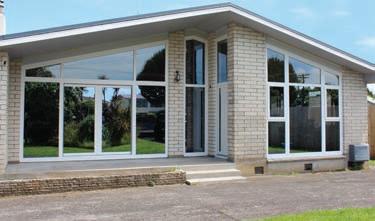
www.ecowindows.nz

Santa and his elves are coming to Tawa on 6 December.
Santa and his elves will be at the Tawa Plaza and New World foyer from 10am to 1pm.
The event is being brought to Tawa by the Tawa Rotary Club, the Tawa Inner Wheel Club and the Tawa Lions Club.
The fun time for everyone will also include sausages, popcorn, face painting, candy floss and entertainment.
The Tawa Summer Pyjama Drive, organised by the Tawa Rotary Club, continues this month.
The drive is held to provide pyjamas to children entering foster care, with every child receiving pyjamas and a bag of essentials when they move to a new family.
People can drop off new children’s pyjamas of any size up to age 14 at Tawa New World.
The Tawa Rotary Club’s winter drive was an outstanding success with more than 200 pairs of pyjamas collected.


you were happiest are often the times you are at your saddest.
Come and join us at our service of remembrance and gather strength from others. This Christmas let us support one another, everyone is welcome.




By Frank Neill
Shackleton’s Antarctic expedition will be the focus of the 2025 Sir Holmes Miller Memorial Lecture.
Presented by the New Zealand Antarctic Society’s Wellington Branch, the lecture will be presented at Victoria University’s Pipitea Campus, Government Buildings LT01, from 6pm to 7pm on Tuesday 11 November.
Antarctic and maritime artist Sean Garwood will give the lecture.
Sean has spent many years compiling photographs and studying numerous accounts by credible historians and authors of Sir Ernest Shackleton’s famous 1914-17 expedition.
This in-depth research, coupled with Sean’s extensive knowledge of the Southern Ocean, has uniquely equipped him to bring the story of the expedition to life on canvas.
His series of oil paintings chronicles a significant chapter in early Antarctic exploration.
Sean is a former ship captain who operated throughout the Southern Ocean.
In 2006 he fulfilled his long-held ambition to become a full time artist.
His dream of visiting the historic huts of Shackleton and Captain Robert Scott came true in 2015.

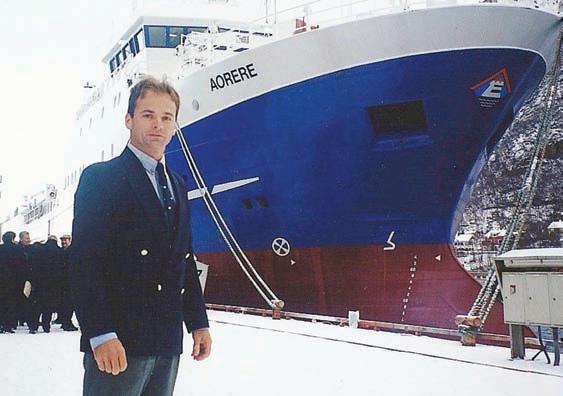
Sean has held numerous solo exhibitions across New Zealand.
These include “Sean Garwood’s Antarctica” (2017) and “A Painted Voyage” (2021), which documented New Zealand’s maritime history.
His work is featured in two books and has appeared twice on New Zealand postage stamps. Sean’s website is at https:// seangarwood.co.nz/classicmarine-art/.

Everyone is welcome at the lecture and people wanting to attend are asked to reply to wellington@ antarticsociety.org.nz by Friday 8 November.

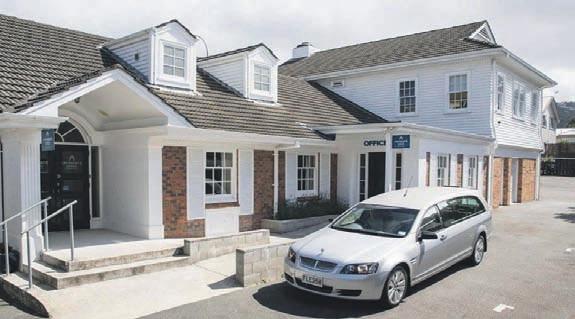

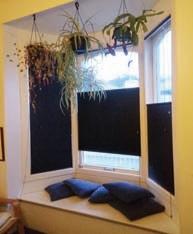



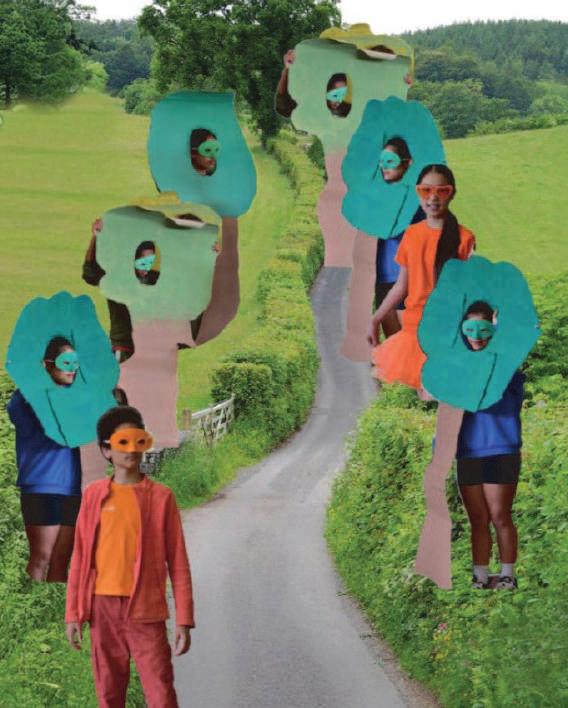

By Frank Neill
MP Nicola Willis’s Thorndon office was one of nine targeted by a group called Aotearoa For Sanctions on 30 October.
Aotearoa for Sanctions is a collective that is demanding that New Zealand cuts all ties with Israel.
It took its demand for sanctions on Israel to nine local MP’s offices across the country, including Nicola Willis’s 1 Molesworth Street office.
“We are urging MPs to support the Unlawful Occupation of Palestine Sanctions Bill and advocate to cut all ties with Israel,” the group says.
“Israel is once again bombing Gaza and has killed at
least 200 Palestinians since the so-called ceasefire began.
Meanwhile, Israel' s acts of terror in the West Bank have escalated.
“This demonstrates the urgent need for concrete action to pressure Israel to abide by international law.
“The government' s conciliatory sanctions on two ministers and twelve settlers were criticised by UN Special Rapporteur Francesca Albanese for creating ‘an illusion of progress while concrete actions were repeatedly stymied’.
“New Zealand was specifically named among the ‘influential Third States’ that have ‘enabled Israel to initiate and sustain its assault on the Palestinian people’,”

Aotearoa For Sanctions says. Protesters
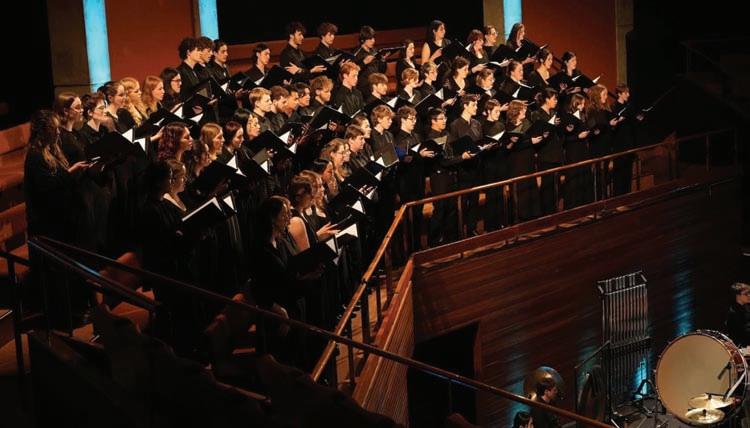
New Zealand Community Trust (NZCT) has awarded the Wellington Youth Choir (WYC) a $3,110 grant to ensure the choir continues to thrive and deliver high-quality performances across the Wellington region.
The WYC includes singers aged from 18 to 27 from throughout the Wellington region.
“The main reason for our choir’s success over the past year is down to our musical director, Rowan, who spends countless hours selecting repertoire, planning rehearsals, and conducting performances to guide the choir’s artistic vision,” Chairperson Josh Long says.
“His incredible musical skill and ability to recruit and retain young singers has driven both membership growth and increasingly ambitious concerts.
“The choir has expanded in repertoire and numbers, and our individual capabilities have grown as a result of his outstanding stewardship.”
Through its performances and collaborations, the WYC continues to provide young singers with high-level musical experiences, while fostering community engagement and strengthening Wellington’s vibrant cultural scene. “We’re proud to support a choir that nurtures young talent and brings incredible music to the Wellington community,” NZCT’s GM of Grants, Marketing and Communications, Ben Hodges says. “Our














By Felicity Wong
Every Sunday before the 10am service the bells of St Peter’s Church ring out.
The bells were installed in 1879 when the gothic style church was opened on the site of an earlier, simpler church in upper Willis Street.
The bells are the oldest in Wellington and the second full set of eight in New Zealand.
During the Heritage Festival visitors could climb the tower steps into the bell ringing chamber and have a go at ringing the St Peter’s Church bells.
With a bit of energy it’s rather simple to pull on bell ropes according to a chart pinned up with short rows of numbers 1 to 8, corresponding to each of the ropes for the 8 different size bells.
Even beginners could play a recognisable tune like “Amazing Grace” or “Ode to Joy”.
The bells were ordered when the church was built, for 500 pounds, but not played until the debt was paid off a couple of years later. There are two methods of ringing the bells, the heaviest of which is 800 kilograms.
In the “ringing chamber”, about a third of the way up the tower, is a wooden cupboard with a set of eight ropes called the “Ellacombe chiming box”.
A rope is pulled to operate a hammer which strikes a stationary bell.
The “Ellacombe apparatus” was invented by the Reverend Henry Ellacombe of Gloustershire in 1821.
He was critical of groups of bell ringers having non-church fun so he designed the
apparatus for one person to ring all the bells.
In 1875 he wrote “we blame the vicar and church warden for allowing the bells to be so prostituted for the benefits of a publican’s profit”.
The Ellacombe system at St Peter’s Church was used from the time the bells were put in 146 years ago.
The outside sound is clear and loud, but not enormously loud from blocks away.
The second method of ringing the bells is called “full circle ringing”.
It creates a much richer and louder sound because of the Doppler effect.
Separate ropes are much harder to pull and to get the bell rocking then turning full circle.
As the bell falls it clangs, called a “peal”, and makes a super sound.
The full circle method has not been used at St Peter’s.
In 1880 a small boy was sent by the congregation to run up the steps of the tower and ask that the bells be stopped because of concerns that gas pipes (used for heating the church) might break.
Some historical research has confirmed there was an early “vibration event” caused by the bells and which resulted in cosmetic damage inside the church.
Plaster cracked near the base of the tower.
The event took place soon after the bells were installed and a few scant news reports hinted at the problem.
There was also a recollection made by the church architect, Frederick de Jersey Clere, some 70 years later before he died.
As a result the bells were not rung as a

Acorn Stairlifts will help you master ‘the three Rs’: Regain your independence, Retain full use of your home, and Remain in the home you love. Installing an Acorn Stairlift turns your home into a bungalow!


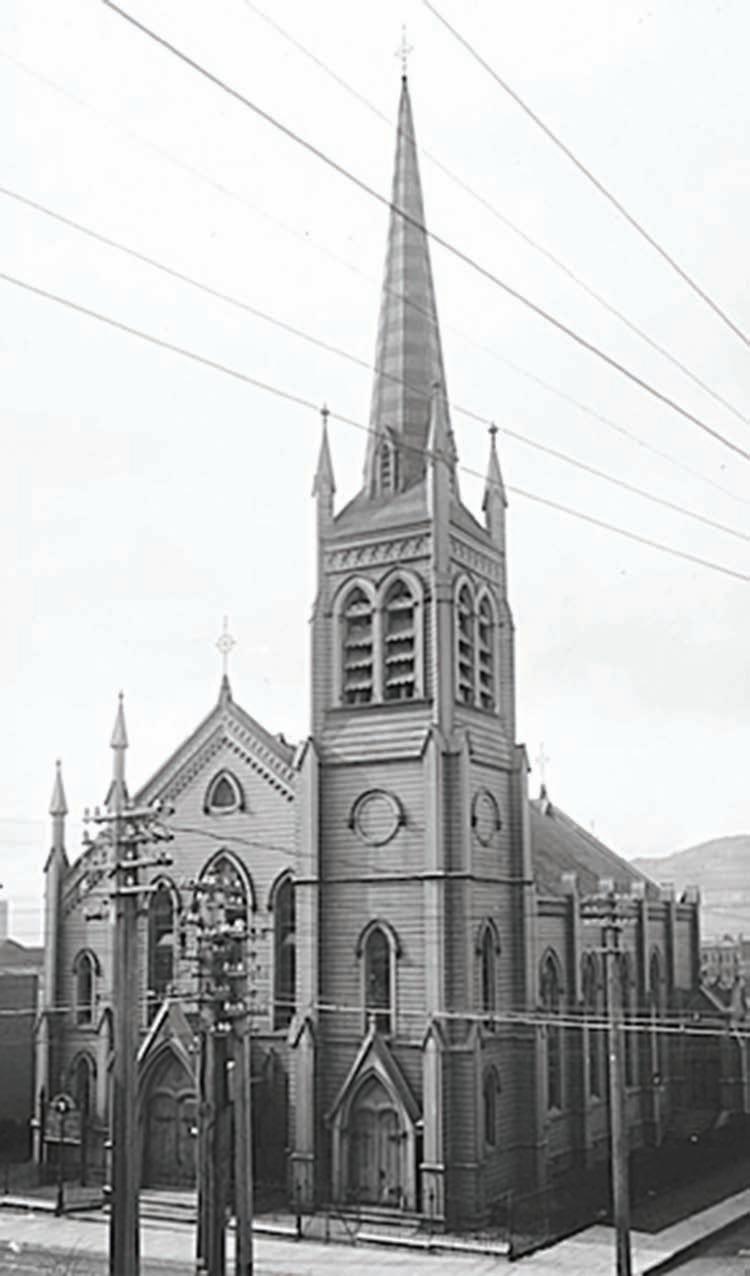
group full circle.
By 1930 the tower had a new concrete base installed, in part to help address any problem.
At the time there was only one bell ringer so the Ellacombe chimes were used.
By the 1950s those bell ropes were perhaps tangled because a report suggested the church verger had to operate the bells by climbing into the clock chamber, a small room above the ringing chamber.
It is only accessible by a difficult, narrow vertical ladder.
The concrete foundation of the tower was replaced again in 1990.
By 1987, however, the bells were no longer operational at all.
The impact of the bells being rung full circle, in light of the 1990 renewal of the tower’s foundation, was not able to be tested.
Recent research suggests that the bells could be rung full circle without dangerous vibration.
The bell tower is made of huge 45 meter long kauri posts.
Testing and experimentation is under way but parts of the mechanism for the full circle peal needs repair.
When the bell chamber was being cleaned and maintained recently, a 10cm thick layer of dust was removed which reflected Wellington’s air quality.
Early layers of coal dust from coal fires used to heat Te Aro homes were covered by cleaner dust from recent decades.
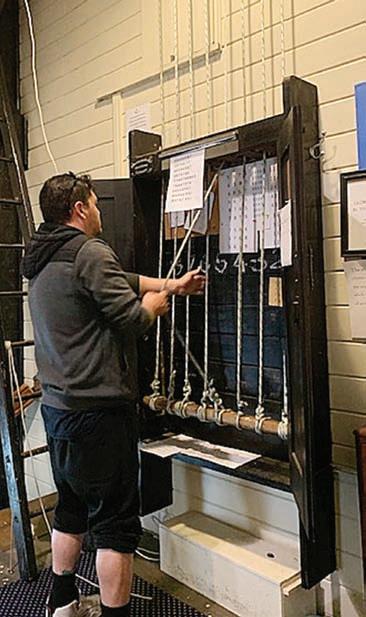
Rather
the


Wellington City Libraries is hosting a global hangout for rangatahi from 1pm to 3pm on Saturday 8 November.
This global hangout will be held online.
“If you are aged 11 to 15 here is an opportunity to join Wellington City Libraries and travel virtually from home to Australia and the United States,” Wellington City Libraries says.
This session will bring together a small group of young people from Wellington, Melbourne and Nicholasville, Kentucky.
Participants will meet, chat, play games and learn more about what it is like to live in Australia and the United States, share experiences of living in Aotearoa and make new friends along the way.
This event will run via Microsoft Teams, facilitated by librarians from Wellington City Libraries, Jessamine County Public Library (Kentucky) and Wyndham City
Libraries (Australia).
All participants will receive a travel kit featuring special souvenirs and snacks to try from Australia and Kentucky.
This event is exclusively for young people aged from 11 to 15 years.
Places are limited and bookings are essential to reserve a place and the kit. To register visit https://wellingtoncitylibraries.trumba. com/Kia-Ora-Gday-Hello-Global-Hangoutfor-Rangatahi/E191412419.
With a new Mayor sworn in for Wellington City, Wellington City Libraries’ history specialist Gábor Tóth presents the remarkable story of Robert Bradford Williams; an African-American who became the longest serving mayor of the Wellington Borough of Onslow.
Read the article at https://www.wcl.govt. nz/news/robert-bradford-williams-wellingtons-african-american-mayor/.
The new water organisation for the metropolitan Wellington area is now legally established, with the name Tiaki Wai Metro Water Ltd and a four-person Board of Directors in place. The new organisation will provide drinking water, wastewater, and piped stormwater services for approximately 432,000 people across the Wellington metropolitan area from 1 July 2026.
Wellington City Council says the name reflects that the organisation is a partnership between shareholding councils and mana whenua iwi Ngāti Toa Rangatira and Taranaki Whānui ki Te Upoko o Te Ika.
“Tiaki Wai in Te Reo Māori means ‘carers for water’. This name captures the intent to deliver safe, reliable, environmentally and financially sustainable water services in a way that restores te mana o te wai. The name has been gifted by mana whenua,” the Council said in a statement.
“Metro Water remains part of the legal name to capture that the new organisation will work across metropolitan Wellington.”
Tiaki Wai Metro Water will be abbreviated to Tiaki Wai, the Council confirmed.
The Board members are:

Contracts for refurbishing the Lady Norwood Begonia House are due to be signed in mid November.
“We have been busy,” says Mazz Scannell, the President of the Friends of the Botanic Garden.
“The Friends, in association with Wellington City Council and the construction and design team have agreed the plans and are currently fine tuning the costs before the contracts are signed in mid-November.
• Will Peet (chair) – Wellington-based independent director and advisor with deep experience in infrastructure, transport, technology, and public sector governance.
• Jon Lamonte – former CEO of Watercare with experience in transport and logistics.
• Elena Trout – independent director and civil engineer with experience in transport, infrastructure and energy.
• Adrian Wimmers – Wellington-based commercial and infrastructure advisor and public sector governance leader.
Advisory Oversight Group member and Porirua Mayor, Anita Baker says the calibre and experience of the Directors will ensure Tiaki Wai Metro Water has a solid foundation.
“These four people bring a wealth of leadership experience and knowledge of infrastructure and water services. They are the people we need to set the new organisation up for success,” she said.
Incoming councils are expected in the coming weeks to finalise key documents and appoint the Partners Committee that will oversee Tiaki Wai Metro Water.
“Meanwhile the garden team has been busy wrenching lemon trees, digging out bedding flowers and wrapping the cacti in anticipation of the big plant move.
“Over the next two months some plants will be rehomed in the greenhouses behind the Treehouse and the majority will travel across the city to the large Berhampore Council nursery.
“In addition, the beloved goldfish will be rehomed next week and the pond drained.
“As you can imagine, there are a number of hives of activity in readiness for the renovation.
“Stage one of refurbishment kicks off now, with the Tropical End closed this week for prep and plant removal.
“The Foyer, Temperate End, will stay open until the end of January. Picnic Café will be open until June 2026 and reopen in September 2026,” Mazz says.
The newly refurbished Begonia House is scheduled to open in May 2027.
To celebrate the progress on the Begonia House, the Friends are planning two “party
dates” in January 2026.
A bring your own cocktail party is planned for 23 January and a community picnic on 25 January, the last day the Begonia House will be open before closing for the refurbishment.
People wanting to join these events are asked to reply to the Friends with their numbers by emailing wbgfriends@gmail. com.
Fundraising for the project is looking good, Mazz says.
“A number of generous benefactors have covered the big items and we continue to fundraise for the balance of the enhancements that will make the Begonia House a place that we can all be proud of.”
People can help by making pledges or they can ask questions, by emailing wbgfriends@gmail.com.
A group of 800 donors is being sought to contribute $1,000 each in recognition of the 800 panes of glass in the conservatory. Donors’ names will be etched on a glass wall in the foyer, a lasting tribute to their support. Names will be listed in order of donation, so early supporters will be displayed at the top.
People can join the group by visiting givealittle.co.nz/cause/the-begonia-housethe-buildings-and-beyond.
People can also donate a smaller amount by visiting givealittle.co.nz/cause/save-thebegonia-house or by depositing into the bank account Friends of the Wellington Botanic Gardens (Inc) 02 0500 0080203 02.



Elite Arboriculture is a local, family-owned and operated tree management business on the Kapiti Coast, offering professional arborist services across the Wellington and Horowhenua regions.
Elite Arboriculture is a local, family-owned and operated tree management business on the Kapiti Coast, offering professional arborist services across the Wellington and Horowhenua regions.
Elite Arboriculture believes the mana of trees must be respected. They love giving back to the Earth by planting trees and to the community through volunteer service. Elite Arboriculture has carried out free tree work at their local preschools and kindergartens, as well as for their Free Tree Initiative, where they offer one lucky recipient arborist services of their choice at no cost.

competition. A great example of a local business supporting the local community… You folks are absolute stars, and we can’t recommend you highly enough.
competition. A great example of a local business supporting the local community… You folks are absolute stars, and we can’t recommend you highly enough.
Wouldn’t it be great to have a sparkling-new kitchen, pantry or laundry to bring fresh life to your home in the New Year?
Porirua, Lower Hutt and Upper Hutt have entrusted Mastercraft Kitchens Wellington to deliver custom renovation or newbuild cabinetry in that time.
Tree pruning and hedge trimming are important to maintain health and structure. From thinning to reductions, Elite Arboriculture can keep your trees healthy and looking their best. The team can also help with planting and mulching, assisting you in finding the right trees for the right spaces and with the right aesthetics.

Elite Arboriculture believes the mana of trees must be respected. They love giving back to the Earth by planting trees and to the community through volunteer service. Elite Arboriculture has carried out free tree work at their local preschools and kindergartens, as well as for their Free Tree Initiative, where they offer one lucky recipient arborist services of their choice at no cost.

Tree pruning and hedge trimming are important to maintain health and structure. From thinning to reductions, Elite Arboriculture can keep your trees healthy and looking their best. The team can also help with planting and mulching, assisting you in finding the right trees for the right spaces and with the right aesthetics.
“We had a team from Elite Arboriculture working at our son’s and daughter-in-law’s place in Paekākāriki today”, a happy customer comments. “This work was being done as a prize that Elite Arboriculture had donated to a local
“We had a team from Elite Arboriculture working at our son’s and daughter-in-law’s place in Paekākāriki today”, a happy customer comments. “This work was being done as a prize that Elite Arboriculture had donated to a local

Mastercraft Kitchens Wellington is encouraging homeowners to come into our Seaview showroom for a free consultation now and confirm your orders before Christmas to get ahead of the queue in 2026.
We are a family-owned business which has proudly established ourselves as one of the sector’s largest operators in the region since 1999.
Over 15,000 customers across Wellington,
Also backed by a nationally-recognised brand, Mastercraft Kitchens Wellington offers a unique start-to-finish service – combining design, onsite manufacturing and assembly with installation and after-service care.
We offer exceptional craftsmanship, reliability and service at the most competitive prices. Trust us to turn your dreams into reality!
Trees are essential to our beautiful country’s ecosystem, but an unhealthy tree can be dangerous. If the time has come for removal, they are qualified to perform the job safely and professionally.

Trees are essential to our beautiful country’s ecosystem, but an unhealthy tree can be dangerous. If the time has come for removal, they are qualified to perform the job safely and professionally.
Elite Arboriculture has a green thumb and green heart for the community and ecosystem.
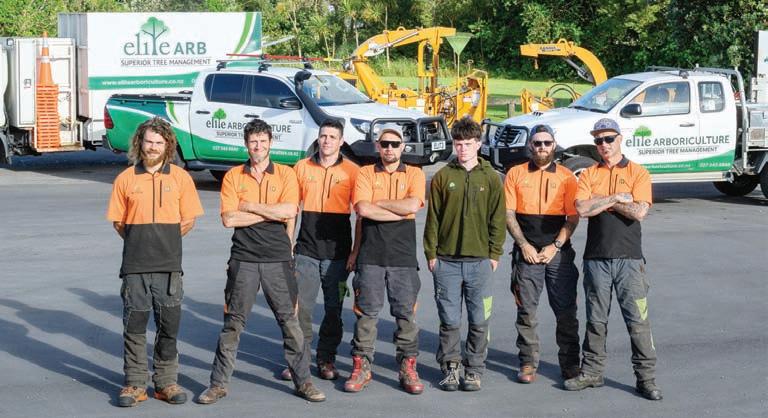


At Prime Doors we strive to be your ultimate garage door supplier and we work hard to bring you quality door solutions at affordable prices. Our guaranteed low prices and great service satisfaction mean you don’t have to wait to your next project.
Elite Arboriculture has a green thumb and green heart for the community and ecosystem.
Prime Doors is a garage door service
provider that provides comprehensive solutions for all your repair, installation, and maintenance needs. Whether it’s a completely new installation, a quick repair, or ongoing maintenance, Prime Doors is here to help you keep your door running properly and securely.





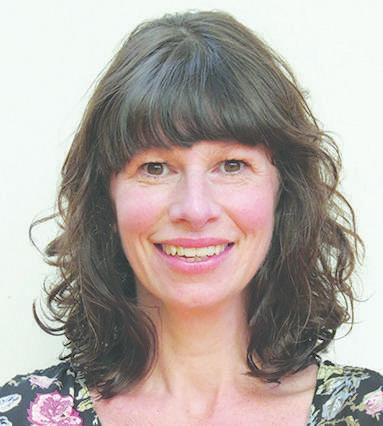
By Frank Neill
Northland dancer Orla Riches will be performing in the New Zealand School of Dance Performance Season 2025, A Celebration of Tradition and Innovation.
This production will take place from 19 to 29 November at Te Whaea: National Dance and Drama Centre in Newtown.
A New Zealand School of Dance second year Classical Ballet Student, Orla will be performing in excerpts from La Sylphide Act II, staged by Nadine Tyson, and Esquisses, staged by Turid Revfeim.
“It’s incredible having the opportunity to learn such special choreography which has been performed by companies internationally,” Orla says.
“ I have loved spending time in rehearsals under Nadine Tyson and Turid Revfeim’s guidance, who are two very supportive and insightful tutors.
“In rehearsals we practice the skills needed as a corps de ballet member in a ballet company.
“I am so excited to perform with my peers and share our passion with a live audience.
“I look forward to seeing the dances coming to life under the stage lights and in our lovely costumes.”
Orla began dancing at the Fiona Haines Dance Academy in Karori when she was four years old.
In 2023 she spent a year at Anneliese Gilberd Academy before coming to the New Zealand School of Dance (NZSD) in 2024.
One of Orla’s tutors, Nadine Tyson, is also a local resident, living in Highbury.
She is a classical tutor at NZSD, working with young aspiring dancers at the school since 2012.
She is staging an excerpt from “La Syl-

phide” Act 2 in this year’s Performance Season.
“It’s an absolutely divine ballet that hails from the Romantic period,” Nadine says.
“This version premiered in 1836. The Bournonville choreography and style are very specific and can be challenging for young dancers.
“I danced the role of the Sylph as a student at NZSD coached by Patricia Rianne, a legendary dancer and teacher. Later I danced the same role as a professional (so grateful) with the Royal New Zealand Ballet, coached by Dinna Bjorn.
“Now it is my turn to pass on to another generation. I love that.
“I can’t wait to see all the dancers on stage.
“I always feel so proud to be a small part of their journey,” Nadine says.
She started ballet aged five because Mia Mason, niece of June Mason, one of the founding members of the Royal New Zealand Ballet, danced.
“I wanted to be just like Mia,” Nadine says, adding that they are now both on the honours board at NZSD.
“Dorothea Ashbridge, Jacqui Trimmer and Jon Trimmer were huge supporters of me as a young dancer.
“I first toured with the Company in my second year at the school in 1991.
“I absolutely loved it and knew this was the place for me” she says.
Nadine decided to retire in 2004 and start a family.
She then coached “Raymonda” and “Celebrated Soubrette” for RNZB and taught at NZSD occasionally until Garry Trinder, the School’s director, offered her consistent work.
“I am truly grateful to be still working in the industry I love,” Nadine says.




Firstly lets start by complaining what a poor spring we have had so far, storms, winds excessive rains has put a dampener on many and Labour Weekend just gone; which is the traditional time to plant more tender plants out like tomatoes and cucumbers has not being a good time.
I remember one wise gardening writer Nick Scott who used to say better leave the tender ones for a month later after Labour weekend. He was not far wrong as if the temperatures are not warm enough and the soil is cold those plants will just sit and sulk till conditions improve.
One constellation is that insects pests that started earlier will have been knocked back and so the problems they cause will be less for a while.
But you must stay vigilant and any early signs of insect pests you should take action and spray them late in the day, when sun is off the garden, with Wallys Super Neem Tree Oil and Wally Super Pyrethrum added together in the same sprayer.
The Super Pyrethrum is so concentrated that you only use 1 mil per litre of spray (thats like a drop into a litre) but at the dilution rate it has tremendous knock down power lasting through the night till the sun comes up next day and then within about 2 hours its gone.
Recently we have been selling many packs of 1 kilo Boric Acid, suddenly out of the blue. Whenever some sudden demand for a not usual product happens there is always a reason and more often enough its because a number of people have seen something on the Internet such as on YouTube that has caused them to buy.
Thus as ‘Curiosity killed the Cat’ I had to find out what the story is...
I phone one of the customers and I was told about a very effective method of controlling wasps.
You make up the attractant/bait with one
litre of orange juice and you put into that 2 tablespoons of Boric Acid, stir to dissolve the powder; then take an empty coke can or other similar empty can and pour a little of the solution into the can to about one third full.
So we have the can with about 50mm of orange juice and boric acid at the bottom of the can; then put a straw or stick into the can through the open tab down into the liquid.
Place the can outside where there is known wasp activity and the wasps will smell the orange juice and climb down the stick into the can to take up the sweet solution before flying back to the wasp nest to feed it to the hive.
Boric Acid is a poison and that is what does the killing.
I am told that honey bees and Bumble bees are not attracted to the solution so they are safe.
Many may not be familiar with Boric Acid so here is some enlightenment for your knowledge base.
Boric acid has uses in medicine, pest control, and household products, but its safety depends on the application and amount used.
It’s used topically to treat certain infections like yeast infections and athlete’s foot, and as an antiseptic eyewash.
It also acts as an insecticide to control ants, cockroaches, and termites, and can be used in cleaning products, personal care items, and as a flame retardant.
It’s important to use it with care, as ingesting or inhaling large amounts can be harmful. It is used as an anti-fungal ointment or powder and removes any foul odor of the feet by applying it inside stockings.
It is also used for treating vaginal infections. Boric acid plays an effective role in pesticides and is effective against pests like rats, houseflies, cockroaches, etc.
For cockroaches simply sprinkle the powder in a safe place such as behind the stove or fridge where the cockroaches will
By Wally Richards
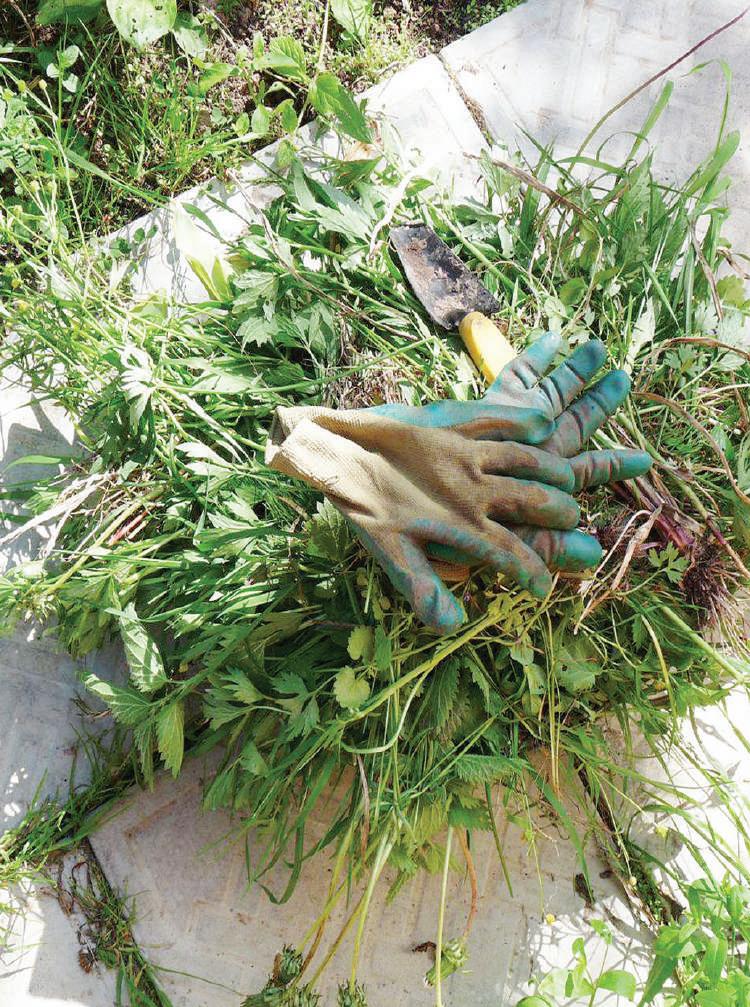
walk through and then as they are being fastidiously clean, they clean the powder off their feet and die.
For ants mix half and half with icing sugar and place as dry bait by ant trails or at entrance of their nest if able.
Boric acid is called a swimming pool chemical because it has proved to be highly useful for maintenance. It can help stabilize the pH level of water and prevent problems with algae.
Now another one that took my fancy was a picture of Chinese gardeners placing round smooth river rocks about 100mm in diameter on top of watermelons that are coming to maturity.
The rocks gather heat during the day and like a sort of hot water bottle help keep the watermelon warmer for a while at night likely speeding up the ripening process.
A reader sent me the following information which was also seen on youtube.



It was a Indian farmers method to obtain a very potentate, natural plant food or foliage food spray.
The original recipe is 20kilos of cow or any other manure, 20 litres of cow urine 2 kilos of molasses and 2 kilos of wheat flour.
The above is stirred and fermentation time is about 5 days.
The urine is likely providing the nitrogen and microbes and with the occasional stir the mix ferments and should ideally have a sweet smell.
The result is diluted 1:200 with water to spray over the foliage of crops/plants.
Now not so many will have access to cow manure and I dont know how they collect the cow urine but I am intrigued about fermenting manure. (Which I have read about when Chinese gardeners ferment together human and pig manure for their crops)
Now if we stop and think about the Nature of things; since time immoral, life forms have been eating and defecating (love that word) in a natural cycle feeding plants that they eat
or they eat the herbivores.
Thus any manure is the best and most natural food for plants and soil life.
Back in the day of the family po (chamber pot) under the parents bed at night as a means of relief instead of the long walk in the dark to the out house would have been a good way of collecting materials for fermenting. So lets adapt: my often suggestion of collecting animal manure be it horse, cattle or chicken manure and placing it into a black plastic rubbish container that has a lid, filling the bottom third with the manure and the water to about the two thirds mark.
Obtain a paddle so the mix can be stirred every so often and keep the lid on and situate ideally in a sunny place to warm the solution. Other things can be added like chopped up comfrey, chopped up sea weed etc.
When ready simply ladle off the liquid manure and side dress plants with it.
Now to ferment this fill the rubbish tin to about half full of manure from any source.
If able add urine progressively to the container taking it to about two thirds full.
Then add 500 grams of flour and a couple of cups of molasses. Stir and use as you wish.
If you are not able to use urine then instead add Wallys Super Fish Fertiliser about 200 mils and 100 grams of Wallys BioPhos along with 100 grams of Wallys Stump Rotter. Stir and use as you see fit.
Time for it to happen will likely depend on temperatures and frequency of stirring and aeration of the mix. Aeration Is simply using an old pot with handle, filling with mix then lifting above and pouring back in.
Repeat 3-4 times every so often to get oxygen though the solution.
If you want to be really into it then obtain an aquarium air pump and air stone on a long tube and have that bubbling away in the mix when you are not stirring it.
Manure is by far the best plant food in the world and in Nature it is recycled into plants growth.


So much to do in
Since 2001, the Kāpiti Coast Art Trail has opened studio doors, hearts and minds across this stunning coastal district..
This November, the iconic event celebrates 25 years of local art and creativity from Paekākāriki to Ōtaki.
Over two weekends, 1/2 and 8/9 November 2025, more than 140 artists will welcome visitors into their studios. Painters, sculptors, jewellers, photographers, textile designers and ceramicists invite you to meet the maker, see the magic behind the work, and maybe take something special home.
The Trail is about connection: people and place, artist and audience, past and present. Long-time creatives like Diane Connal, who’s exhibited every year since 2001, have shaped this vibrant celebration woven into the fabric of the Kāpiti Coast.
With beaches, boutique food and wine, galleries and a relaxed pace, Kāpiti is the perfect weekend escape. Stay a night or two, but book early, accommodation fills fast.
Proudly brought to you by Kāpiti Coast District Council.

Work currently available in Jennifer Turnbull’s home studio is from firings using the diesel kiln for the Mirek Smisek Trust – The kilns at Te Horo.
She is part of a group of potters who are interested in reduction atmospheric firings of salt and soda, using different clays and glazes to achieve interesting surface effects, on porcelain and stoneware. Each piece is individual, not repeatable, making them one–off pieces of ceramic art.
Also available is gas fired porcelain domestic ware, framed lithography printed tiles and travel cups and gift
boxed pottery – ideal for that very special gift.
Over the last few years, Jennifer’s focus has changed with the opportunities to become more involved atmospheric firings - wood, salt and soda, and the building of a diesel kiln for The Mirek Arts Trust.
This style of firing pottery creates interesting surface effects from salt and soda added to the firing at high temperatures. Work fired in these kilns produce juicy surfaces, and each piece is individual, not repeatable, making them one-off pieces of ceramic art. It is exciting to be involved and she feels very lucky to be part of this wonderful community project.
Paula Archibald experiments with different subjects, clays and glazes to achieve a range and variety of effects, from domestic ware, whimsical ornaments to large garden water features. Pit, raku, wood, and soda firing also fascinates her interest and builds her
knowledge of glazing and continues to inspire.
To broaden her craft skills and to be with like-minded people, Paula enjoys learning and attending workshops. She is 21/2 years through the 4 year part time diploma in Art and Design.
Jane’s mosaics are inspired by her suroundings and the wider NZ environment. She started mosaics whilst living in the UK after being inspired by the artists at the Mosaic Workshop in London. After many years of working on her art part-time she took early retirement in 2002 to work on her art full-time and opened a Gallery in Kapiti. Jane uses porcelain, ceramic and glass tiles which are hand cut and applied on sign plywood. Jane has exhibited in Wellington, Auckland, Australia and England and sold from selected Galleries.
Every month Finn’s have their monthly live music gig so it’s a great chance to have a good time.
Finn’s is a popular hub at Paekakariki and only a few minutes’ walk from the railway station and right on State Highway 59 which means it is very easy for visitors to get to by train from Wellington, or by car, making it the ideal
getaway destination for that weekend away from the pressures of city life and work. It is a boutique hotel of superior studio units with spa baths, king-size beds, microwave, tea and coffee-making facilities so why not book a room for Labour Weekend or the holidays? Don’t forget to check out the nearby Paekakariki Station Museum!


Kapiti Arts Trail 2/3 & 9/10 Nov 10am – 4pm
3 Bell Street, Ōtaki




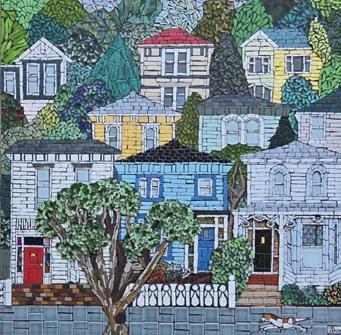
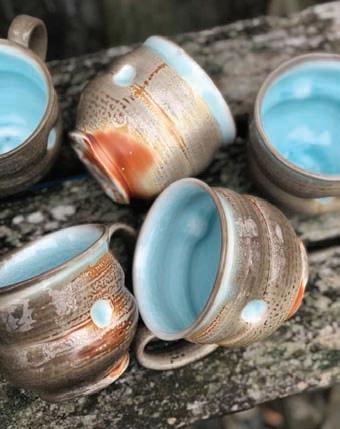
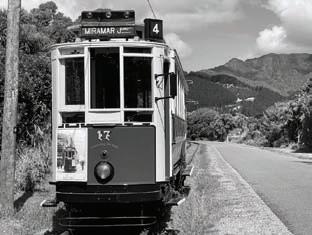
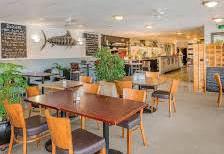


Critical maintenance night work is planned for State Highway 1 and its southbound lanes near Johnsonville next week.
The highway will be closed to southbound traffic from Monday to Thursday nights next week (10 to 13 November), between 9pm and 4:30am.
The closure will be in place between the Johnsonville southbound off-ramp and the Johnsonville southbound on-ramp.
A local road detour will be available for all traffic, including heavy vehicles, via Johnsonville Road.
The work is scheduled at night, when traffic volumes are lower, to minimise delays for drivers.
However, the detour will require additional travel time, so drivers heading into Wellington should allow extra time for
their journey while this maintenance work is under way.
Contractors will be conducting general maintenance work on the highway, clearing litter, replacing edge markers and completing drainage works.
The drainage improvements are to prevent water pooling on the highway, which poses a safety hazard to drivers and increases the risk of potholes.
Due to the amount of work planned it is quicker and more efficient to complete it using a southbound lane closure. This allows work crews to finish their tasks faster, reducing the overall impact on traffic. This is essential maintenance work and ensures the highway is kept safe and reliable for the public.
Drivers are asked to follow all detours
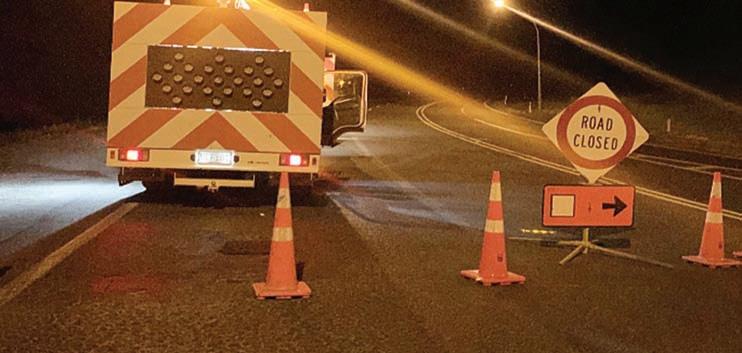
This work is weather-dependent, and schedules may change if





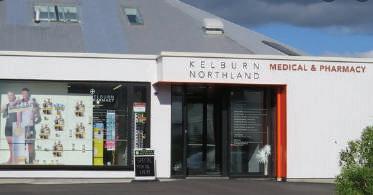


November is Diabetes Action Month when Diabetes New Zealand aims to unite communities across Aotearoa to take action against one of the country’s most urgent health issues.
In 2025 Diabetes New Zealand is focusing on tamariki and rangatahi because young people do get diagnosed with diabetes (both type 1 and type 2) and the numbers are rising at an alarming rate.
By raising awareness of the signs and symptoms of diabetes, with a particular focus on young people, Diabetes New Zealand aims to empower tamariki, rangatahi, their whānau, schools, communities and health professionals, to recognise the signs and take action.
The earlier diabetes is diagnosed, the better the chances of managing it well and living a full, healthy life.
Mate huka (diabetes) is a condition where the level of glucose in the blood is too high.
Glucose is the main source of energy in our bodies. It is mostly made when our bodies break down the carbohydrates that we eat or drink.
The glucose is then absorbed from our gut into the blood system.
Insulin is a hormone produced by special cells (called beta cells) in the pancreas. Insulin transports glucose from the bloodstream into the body’s cells, where it can be used as fuel for energy.
Mate huka occurs when the insulin-making cells in the pancreas are unable to make enough insulin or when the body becomes resistant to insulin.
In Aotearoa New Zealand, 45 people develop diabetes each day.
In the last year 16,330 people were newly diagnosed with diabetes.
“So, this November, join us and take action,” Diabetes New Zealand says.
“Learn the signs. Share the message. Get tested. Join One Million Minutes (see www. diabetesactionmonth.org.nz).
“Together, we can support the rising number of young New Zealanders living with diabetes and help them thrive.”

By Frank Neill
Five sports organisations that operate in the “Independent Herald” circulation area were recipients of grants in the latest round of the New Zealand Community Trust’s disbursements.
The Johnsonville Cricket Club received $20,000 for a salary.
The Karori United Tennis Club was granted $3,700 for coaching services.
The Khandallah Tennis and Squash Club received $5,000 for coaching and balls.
The North Wellington Football Club
received $15,000 for playing uniforms.
The Wellington North Badminton Association was granted $25,000 for shuttles and salaries of the general manager, community development manager and community development officer/coach co-ordinator.
The trust disbursed $477,192.92 in the latest round of funding, announced on 3 November.
One gaming venue in the “Independent Herald”’s circulation area contributed to these grants – The Pickle Jar in Karori. It was one of 17 gaming venues in the greater Wellington region that contributed.
People who are interested in helping in the local community have an opportunity to find out more about how they can do it this month.
“Meet Karori Lions” is taking place at the Karori Park Sports Club, 400 Karori Road, from 7:30pm to 8:30pm on Wednesday 19 November.
This free event will give people the opportunity to find out what Lions is and what they do.
It will also give people the chance to let the Lions know what more they can do.
“Let us know if you wish to help,” the Karori Lions say.
“Maybe think about joining us.
“Have you every wondered how you can help your community and those in dire need?
“Have you wondered how to meet community-minded people and have your own efforts supported and magnified?
“Lions may be the answer.”
Karori Lions is a diverse group of men and women of all ages with a common interest in helping those in need and to help its community thrive.
The club is part of a worldwide network of Lions clubs.
As well as entry to the event being free, light refreshments will also be served.













The Community Noticeboard is for non-profit organisations. For $15.00 you can publish up to 25 words. No AGMS, sporting notices or special meetings. Community Notices must be pre-paid. phone (04) 587 1660 or email classifieds@wsn.co.nz
Ngaio Repair Cafe is free, open Saturday 15 November,10am - 1pm, Ngaio Union Church, corner Crofton Road and Kenya Street.
By Frank Neill
Kelburn resident Daran Ponter has been re-elected Chair of Greater Wellington Regional Council.
Cr Ponter was re-elected during the new Council’s swearing in ceremony and inaugural meeting on 30 October.
He was first elected to the regional council in 2010. After serving until 2013, Cr Ponter was not re-elected.
Through
From
Severn
However he was appointed to the Council to fill the vacancy created by the resignation of the fomer Chair Fran Wilde in April 2016.
He was then re-elected for four more terms in 2016, 2019, 2022 and 2025.
Following the 2019 election Cr Ponter was elected the Chair and has served in that role since.

In his inauguration speech Cr Ponter looked back on what the Council had achieved over the last three years.
“This was a period where we cemented relations with mana whenua, made significant strides in resetting our region’s natural resources plan, started a journey with Ngāti Kahungunu and Rangitane in relation to Wairarapa Moana, commenced works on RiverLink, championed government co-investment into flood control, completed major capital investments in our bulk water supply assets in the Hutt Valley, purchased additional land for the East Harbour Regional Park, commenced a more aggressive programme of revegetation of our regional parks, identified land for a new Wairarapa Regional Park, and tackled issues related to rescue capability in the Cook Strait,” he said.


“We also signed off a new hybrid train fleet, the total refurbishment of the Wairarapa line and Remutaka Tunnel, investment in the Wellington ‘throat’ and the replacement of all wooden traction poles on the rail network.
“Plus, investment in three new publicly owned bus depots, further electrification of our bus fleet, the introduction of new routes and capacity, and big strides in bus reliability,”
Cr Ponter said.

Looking ahead, Cr Ponter said that this triennium would be great but warned that a lot will be asked of Councillors as they navigate fiscally challenging times, significant reforms and the need to plan for the future.
“Our biggest challenge is to sink a lid on rates increases, while navigating the trade-offs around service cuts this will inevitably bring,” he said.
“ As we did in this financial year, we will get to a lower rates number than set out in our Long-
Term Plan, but with that will come questions around quality and levels of service.
“As part of what has become the tikanga of our Council table we will strive for consensus.
“It’s not always possible, but when achieved, decisions are more robust and stand the test of time.
“It can make for some long discussions but the results are worth it,” Cr Ponter said.
Wairarapa resident Adrienne Staples was re-elected the Council’s Deputy Chair.
By Russell McQuarters
By Russell McQuarters
High fashion dressmaking (7)
Supply (5)
Contagious disease (7)
Stationers (11)
Object (5)
Lacking culture (11)
(8)
5 year peroids (8)
Doglike (6)




2 November.
By Frank Neill
Onslow’s premier Cricketers were on the wrong end of a nailbiter in Cricket Wellington’s T20 competition on 2 November.
Upper Hutt won the match, played at Barton Oval, by just three runs.
Batting first, Upper Hutt reached 172 all out.
They then bowled Onslow out for 169.
Elliot Seddon bowled exceptionally well for Onslow, taking four wickets and conceding just 17 runs in his 10 overs.
Yash Vagadia also bowled well, taking two wickets for 27 runs, and then scored 32 runs with the bat.
He was one of three Onslow batsmen who reached the thirties.
Micah Conroy scored 39, and Sam Keegan reached 35 not out at the end of the innings.
Onslow’s next match is against Taita Landmark Signs at Nairnville Park on 8 November.
Karori lost to Eastern Suburbs at Kilbirnie
loss of five wickets in their 20 overs.
They then restricted Naenae to 115 for eight wickets.
Their Captain, Zack Scott-Howman, was in outstanding form with the bat and was 77 not out at the end of the innings. Zack had faced only 54 deliveries.
Will Martin also scored a half century for Johnsonville, and was out for 58 runs from 42 balls.
Dominic McAlister took two wickets for 22 runs, Maximus Petrie two wickets for 26 runs, Connor Lusty one wicket for 14 runs and Faaiz Yusuf one wicket for 29 runs.
The Johnsonville women were not so fortunate on 2 November, losing to Upper Hutt United.
Batting first, Johnsonville reached 94 for five wickets in their 20 overs.
Upper Hutt took 14 overs and five balls to reach 95 for one wicket.
Mira Patel batted outstandingly for Johnsonville and was 47 not out when the innings ended.
Gemma Sims also batted well to score 20 runs.
Aesha Sukhu took the only Upper Hutt wicket to fall.
Extra capacity on Metlink train services services after the game.
Park on 2 November.
Batting first Eastern Suburbs reached 276 for seven wickets.
They then bowled Karori out for 258 runs.
Kevin Weerasundara continued his good wicket taking season with four for 61.
Nibu Jose took two wickets for 44 and Yashraj Kalsi one wicket for 44.
Yashraj then went on to score 91 with the bat, scoring faster than a run a ball as he faced just 88 deliveries.
Kevin also followed up his great bowling, hitting a half century and going on to score 58
Captain Oscar Wilson came close to a half century with 47.
Karori’s next match sees them face Hutt District at the Hutt Recreation Ground on 8 November.
Johnsonville’s premier men chalked up a convincing 60 run victory in their premier 2 match against Naenae Old Boys at Alex Moore Park on 2 November.
Batting first, Johnsonville scored 175 for the
